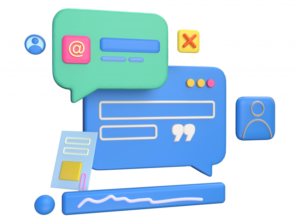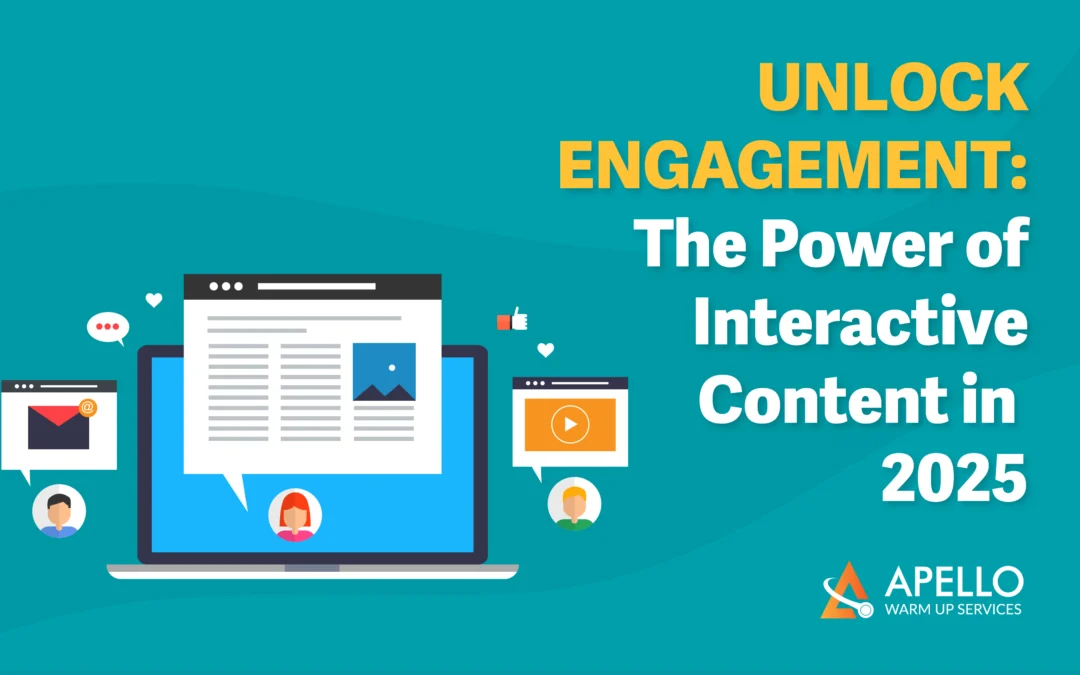Interactive content? What’s that? Online interaction being transformed: that’s what it is. And it’s particularly effective with email marketing and lead gen.
Imagine a website that actually talks back to you; that’s the power of interactive design. Gone are the days when static blog posts and passive infographics could command attention. Think interactive games, polls, or contests. Engaging experiences are how clever marketers connect with their customers and spark conversations. Digital branding is transformed by interactive content; I’ve seen it work wonders. When I first started experimenting with quizzes and polls on my own site, I was blown away by the surge in engagement. Suddenly, visitors weren’t just passively scrolling – they were actively participating and spending way more time on my pages. But interactive content isn’t just about boosting time on site. Making memories and building relationships with your audience—that’s the goal. Whether it’s a personality quiz that offers tailored product recommendations or an interactive infographic that lets users explore data at their own pace, this type of content puts the user in the driver’s seat.
Ready to begin? Here’s the plan.
- Interactive content is powerful. Engagement on Steroids
- Types of Interactive Content That Drive Results
- Measuring the Impact of Interactive Content
- Implementing Interactive Content in Your Strategy
- Conclusion
The Power of Interactive Content: Engagement on Steroids
Let’s talk numbers for a second. According to an analysis by Mediafly, interactive content saw a whopping 52.6% more engagement than static content. That’s not just a slight bump – it’s a game-changing difference. But here’s the kicker: despite these impressive stats, only 14% of marketers surveyed by HubSpot said they want to try interactive polls and games in 2024. That’s a chance, I think. If you’re not already leveraging interactive content, you’re leaving a huge engagement boost on the table.
Why Interactive Content Works
So what makes interactive content so effective? It boils down to a few key factors: 1. Active participation: Users aren’t just reading – they’re doing. People remember it better, and they stick with it longer. 2. Personalization: Many interactive elements can provide tailored results or recommendations, making the content feel more relevant to each individual user. 3. Instant gratification: Interactive content keeps users engaged; instant feedback from quizzes or live data changes does the trick. 4. Shareability: People love sharing their quiz results or interactive experiences on social media, expanding your content’s reach organically.
Types of Interactive Content That Drive Results
Now that we’ve covered the “why,” let’s dive into the “what.” There’s a wide range of interactive content types you can experiment with:
Time for quizzes and assessments to see how you’re doing.
You can’t have interactive content without quizzes; they’re that important. Think of them as the backbone. Sharing them is simple, they’re a blast, and both users and companies gain helpful information from them. Think of it like a two-way street. BuzzFeed has mastered this art, with 96% of users who start their sponsored quizzes finishing them. For a great example, check out BuzzFeed’s “Sorry, If You’re Under 40 There’s No Way You’ll Pass This Quiz”. This marketing campaign expertly uses nostalgia.
Interactive Infographics
Static infographics are so 2010. Users can explore data at their own speed with interactive infographics. New things show up when you play around with them. Yes! It worked. I am absolutely delighted. I am thrilled! It’s perfect. Absolutely mind-blowing. Seriously. NeoMam Studios created an excellent example with their 13 Reasons Why Your Brain Craves Infographics piece.
Calculators and Tools
Practical interactive tools can provide immense value to your audience. Think mortgage calculators for real estate sites or calorie counters for fitness blogs. People will use these tools, and your brand will look good because of it. You’ll appear helpful.
Interactive Videos
Interactive videos take engagement to the next level by allowing viewers to make choices that affect the outcome. Netflix’s Black Mirror: Bandersnatch is a high-profile example, but brands can use simpler versions for product demos or choose-your-own-adventure style marketing campaigns.
| Interactive Content Type | Engagement Rate | Completion Rate |
|---|---|---|
| Quizzes | High | 96% (BuzzFeed sponsored quizzes) |
| Interactive Infographics | Medium-High | Varies |
| Calculators/Tools | High | Varies |
| Interactive Videos | Very High | Depends on length/complexity |
Measuring the Impact of Interactive Content
One of the biggest advantages of interactive content is its measurability. According to Rock’s survey, 60% of organizations that use interactive content can better measure their efficiency, compared to only 25% among those that use static content. This improved measurability allows you to: 1. Get a feel for your users. What are their desires? What’s their game plan? For example, what features do they use most often? What pages do they visit? This data? You need to understand this: it’s vital. It’s going to shift our perspective completely. It’s that good. Refine your content strategy based on concrete insights 3. Demonstrate ROI to stakeholders more effectively
Case Study: Spotify Wrapped
Let’s look at a real-world example of interactive content success. Spotify’s annual “Wrapped” campaign is a masterclass in personalized, shareable interactive content. In 2020, it led to a 21% increase in Spotify’s mobile app downloads in the first week of December. Personalization, interactivity, and the ability to share—that’s the winning combination for this campaign. Users eagerly anticipate their personalized year-in-review, exploring their listening habits through an interactive story format. The kicker? It’s incredibly shareable, with over 60 million users sharing their Wrapped results on social media in 2021.
Implementing Interactive Content in Your Strategy
Ready to dive into the world of interactive content? A little guidance to get you started: 1. Start with your audience: What type of interactive content would resonate most with your target demographic? 2. Set clear goals: Are you aiming for engagement, lead generation, or data collection? Think about what you hope to accomplish; this will direct your writing. 3. Choose the right tools: Platforms like Thinglink, Apester, and Mapme can help you create interactive content without heavy development resources. 4. Promote across channels: Don’t limit your interactive content to your website. Share it on social media, embed it in emails, and consider paid promotion to maximize reach. 5. Analyze the results; then, make adjustments and repeat the process. Put your data to work; make some improvements! Think of it like this: the data you have is a tool; use it to fix problems and make things better. The goal?
Interactive experiences that really grab you.

Forget flashy trends. Interactive content gets results. Connecting with people, understanding what they want—that’s how you make more sales. As we’ve seen, the numbers don’t lie: interactive content consistently outperforms its static counterparts across a range of metrics. Whether you’re just dipping your toes into quizzes and polls or diving headfirst into complex interactive experiences, there’s no denying the potential of this dynamic content format. People find things appealing when they’re in charge and having a good time. This creates loyalty and builds lasting relationships—it’s far more powerful than just a quick glance. So don’t be part of the 86% of marketers sleeping on interactive content. Interactive features? Engagement explodes! Your audience (and your metrics) will thank you.


Recent Comments